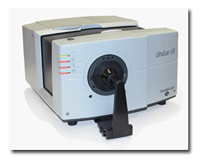DuPont™ Nomex®, the heat resistant
fiber used in products ranging from protective apparel to electrical insulation, marks its 40th
anniversary this year, as demand increases for the high-performance material and its numerous
applications.
Nomex® is an inherently flame-resistant, high-temperature fiber that will not melt, drip or
support combustion in air. It also delivers outstanding resistance to a broad range of chemicals
and is offered in paper, felt, fabric and fiber forms.
Nomex brand fiber is used across a diverse range of applications, but it is perhaps best
known as a critical component in protective apparel. Today, more than three million firefighters
around the world are protected by turnout gear, stationwear and accessories made of Nomex due to
its unique combination of flame protection, durability and mobility. Nomex also is used in apparel
worn by military pilots and combat vehicle crew; auto racing drivers, pit crew members and track
officials; and industrial workers at risk from flash fire and electric arc hazards. Troops in Iraq
are being outfitted with Nomex apparel to protect them from burns caused by roadside bombs, one of
the greatest threats to American troops.
“The world is a safer and more energy efficient place as a result of Nomex and its
innovative applications. Over four decades, the Nomex brand has become synonymous with safety and
protection. We continue to invest aggressively in the development of new Nomex applications to help
solve the world’s evolving needs,” said William J. Harvey, vice president and general manager —
DuPont Advanced Fibers Systems.
DuPont introduced Nomex in woven and non-woven forms in 1967. While Nomex grew out of
fundamental R&D work done by Paul Morgan and Stephanie Kwolek, Wilfred Sweeny unveiled the
discoveries leading to the final development of Nomex at the DuPont Experimental Station in
Wilmington, Del., the company’s global R&D headquarters. Building on the earlier research,
Sweeny found a way to make a high-molecular-weight product that could be spun into a tough
crystallizable fiber (later named Nomex) which possessed outstanding thermal and flame-resistant
properties. In 2002, Sweeny was recognized for his contributions with a Lavoisier Medal, the
highest honor of science excellence awarded by DuPont.
Committed to continuing to deliver innovation and strong customer service, DuPont last year
announced a $100 million global expansion plan to increase worldwide capacity for Nomex and support
exciting new applications including:
* Wind Power — Expanded Nomex applications, providing solutions for the growing use of wind
power in countries like Spain and China
* DuPont Nomex Limitedwear for Military — A lightweight, limited- use garment designed as
specified by the military to help protect soldiers from flash fires.
* Selective Permeable Membrane (SPM) Technology — DuPont is working with the U.S. Army
Soldier System Center in Natick, Mass., on new lightweight suits featuring DuPont’s SPM technology,
which will help protect front line defenders from chemical and biological agents.
* DuPont Tychem ThermoPro — A single garment that combines flash fire and chemical
protection.
In addition to its use in protective apparel, Nomex(R) brand paper has been providing
high-performance electrical insulation for motors, transformers and generators for decades. The
electrical, mechanical and thermal properties offered by Nomex(R) help extend the life of
electrical equipment, as well as reduce premature failures and repairs. Honeycomb of Nomexpaper is
used for lightweight structural support and helps substantially improve the performance of most
commercial aircraft. Nomex paper can also be found in consumer appliances, industrial equipment and
transportation equipment such as high- speed trains.
DuPont is a science-based products and services company. Founded in 1802, DuPont puts
science to work by creating sustainable solutions essential to a better, safer, healthier life for
people everywhere.
Operating in more than 70 countries and regions, DuPont offers a wide range of innovative
products and services for markets including agriculture and food; building and construction;
communications; and transportation. The DuPont Oval Logo, DuPont, The miracles of science, Nomex
and Tychem are registered trademarks or trademarks of DuPont or its affiliates.
Press Release Courtesy of DuPont and PR Newswire

 Reston, Va.-based Hunter Associates Laboratory Inc. (HunterLab) now offers
Reston, Va.-based Hunter Associates Laboratory Inc. (HunterLab) now offers


